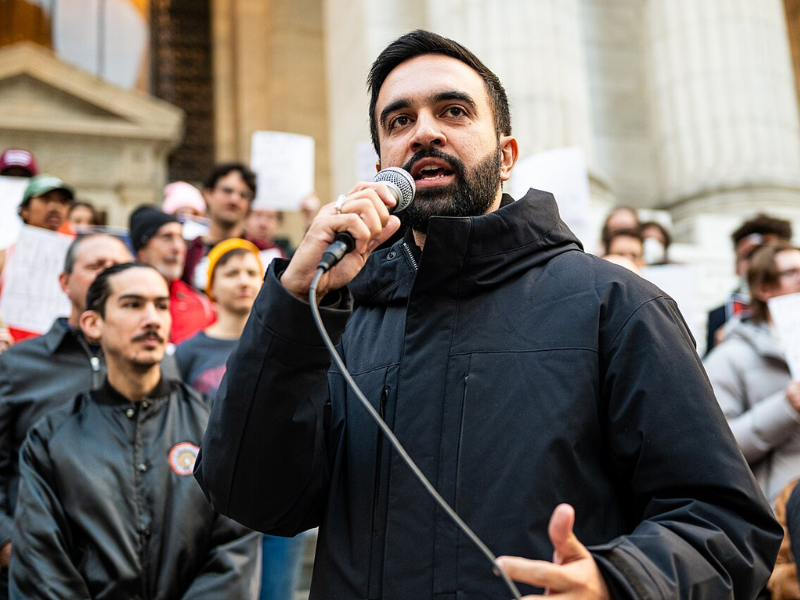The award-winning scientist responsible for creating, collecting, and maintaining the National Oceanic and Atmospheric Administration’s (NOAA) data archive, John Bates, recently disclosed that prominent NOAA climate scientists violated the agency’s rules, rushing to publication data that had yet to be tested and confirmed in order to influence the outcome of the Paris climate negotiations in 2015.
In a second breach of agency protocol, the scientists involved, led by Tom Karl, failed to properly archive and store their datasets for testing and public disclosure. Subsequently, some of the original datasets were lost when the computer used to process the data suffered a complete failure.
Karl, et al.‘s 2015 “pause busting” research purported to show, contrary to every temperature dataset in existence at the time, that Earth had not experienced an 18-year pause in rising temperatures, but rather temperatures had continued to rise at an alarming rate right along with carbon dioxide levels. As Bates put it, Karl’s team put their “thumb on the scale” to produce the results they wanted.
Much of the climate science community became suspicious of Karl’s claims over the months after the study was released, when it was discovered, as David Rose wrote for the Daily Mail, “[Karl et al.] took reliable readings from buoys but then ‘adjusted’ them upwards – using readings from seawater intakes on ships that act as weather stations … even though readings from the ships have long been known to be too hot.”
When you mix bad data with good, you no more produce reliable results than adding muddy river water to purified bottle water produces safe drinking water.
Karl’s actions show climate scientists wedded to the theory humans are causing catastrophic climate change learned nothing from the Climategate scandal of 2009. In Climategate, hacked e-mail exchanges among prominent scientists advising world leaders on climate policy exposed the scientists behaving badly, hiding inconvenient data, refusing to share data for confirmation, and persecuting scientists who question the human causes or catastrophic consequences of climate change.
In the aftermath of Climategate, in order to ensure scientific integrity and regain the public’s trust, scientific bodies investigating the scandal called on scientists to allow access to their raw data, assumptions, methodologies, and software, and to promptly and completely respond to all Freedom of Information Act or government requests for information.
Karl and his team not only violated NOAA’s protocols, they also ignored suggestions made by the scientific community to improve transparency and accountability for research. When the U.S. House of Representatives House Committee on Science, Space, and Technology – the committee with oversight over federally funded research – subpoenaed NOAA’s documentation for its pause-busting claims, NOAA refused to turn over all the materials requested, citing concerns about confidentiality and the integrity of the scientific process. New investigations are being launched into NOAA’s research in light of Bates’ disclosures.
Extraordinary claims require extraordinary evidence, yet for NOAA sound science took a back seat to scoring a political victory. NOAA’s research played right into world leaders’ predispositions to take dramatic action on climate change. As a result, this research of dubious merit provided impetus for the climate change treaty agreed to by the leaders of more than 190 nations in Paris in December 2015.
These are dark times for climate science, and it has nothing to do with Donald Trump being in the White House.
– H. Sterling Burnett
SOURCES: Climate Etc.; Daily Mail; and U.S. House Committee on Science, Space, and Technology
IN THIS ISSUE …
Developing countries cause most human greenhouse gas emissions … Trump’s choice: Fossil fuel cuts vs. human flourishing … Danish geoengineering project to prevent global warming … Climate change bias in science journals
DEVELOPING COUNTRIES CAUSE MOST HUMAN GREENHOUSE GAS EMISSIONS
Those who believe human greenhouse gas emissions are responsible for global warming regularly claim developed or industrialized nations are responsible for the majority of the greenhouse gas emissions. A post on Energy Matters shows the Intergovernmental Panel on Climate Change has known for some time that developing countries account for the majority of greenhouse gas emissions.
A little-publicized 2007 analysis, the Modelling and Assessment of Contributions to Climate Change (MATCH) study, conducted at the behest of the United Nations Framework Convention on Climate Change, concluded greenhouse gas emissions from developed countries caused less than half of the global warming experienced through 2000.
MATCH’s analysis examined greenhouse gas emissions (CO2, methane, and nitrous oxide) from various countries and regions, including emissions from wood-burning, deforestation, and agriculture, and found emissions from developed countries contributed to 41 percent of the global temperature increase between 1890 and 2000. Fifty-nine percent of humanity’s share of Earth’s warming was caused by emissions from developing countries.
The MATCH report states:
This paper finds that the relative contributions of different nations to global climate change- attributing only emissions of long-lived greenhouse gases-are robust, despite the varying model complexity and differences in calculated absolute changes. For the default calculations, the average calculated contributions to the global mean surface temperature increase in 2000 are about 40% from OECD90, 14% from Eastern Europe and Former Soviet Union, 24% from Asia and 22% from Africa, Latin America and the Middle East.
While there are no solid data on total greenhouse gas emissions by country since 2000, data on carbon dioxide emissions alone indicate the gap between developing and developed countries has grown since 2000. Not counting carbon dioxide emissions from wood burning or deforestation, British Petroleum’s 2016 Statistical Review shows emissions from developed countries declined between 2000 and 2015 while developing countries’ carbon dioxide emissions, driven largely by China, increased by 80 percent. If MATCH were to update its results to 2015, it would likely discover developing countries have caused more than 60 percent of the warming since 1890.
SOURCES: Energy Matters and United Nations Framework Convention on Climate Change
TRUMP’S CHOICE: FOSSIL FUEL CUTS V. HUMAN FLOURISHING
In an article on his blog, climate researcher Roy Spencer defends President Donald Trump’s decision to remove references to climate change from the White House website. This is not anti-science, Spencer says, but rather shows Trump “does not want to waste time and destroy prosperity just for those who want to feel good about their efforts to Save The World™.” Björn Lomborg has estimated reducing fossil fuel use to meet the greenhouse gas emission reductions specified in the Paris climate agreement will “destroy $100 trillion in wealth this century for an unmeasurable reduction in warming,” which Spencer says:
… will lead to [millions of] (preventable) deaths, due to poverty and all problems stemming from poverty. … Poverty kills millions. As far as we know, human carbon dioxide emissions have killed no one. In fact, it has saved millions of lives and increased prosperity.
For Spencer, the only moral choice – given current technologies and the relative abundance, affordability, and reliability of fossil fuels – is to continue using them as efficiently as possible because poverty, not climate change, it the real threat to humanity.
SOURCE: Dr. Roy Spencer Global Warming Blog
DANISH GEOENGINEERING PROJECT TO PREVENT GLOBAL WARMING
A study by the Copenhagen Consensus Center argues instead of collectively spending $100 billion annually to fund the Green Climate Fund or destroying $100 trillion in wealth over the twenty-first century by reducing fossil fuel use, as the 2015 Paris climate agreement would require, developed nations should instead invest just $9 billion on 1,900 seawater-spraying boats to whiten clouds.
Marine cloud whitening would have effects similar to those of a volcanic eruption by inserting salt particles into the atmosphere, making clouds denser and whiter, as a result reflecting more sunlight back into space. The study estimates, “Spending just $9 billion on 1,900 seawater-spraying boats could prevent all the global warming set to occur this century.” According to Björn Lomborg, director of the Copenhagen Consensus Center, the geoengineering project would provide $2,000 in benefits for every dollar spent. By contrast, if all the signatory countries to the Paris climate agreement meet their commitments, the benefits will amount to a couple of cents for every dollar spent.
The geoengineering proposal would not put Earth into perpetual darkness; people would not even notice the difference. According to the authors, “reflecting into space only one to two percent of the sunlight that strikes the Earth would cool the planet by an amount roughly equal to the warming that is likely from doubling the pre-industrial levels of greenhouse gases.”
We keep using fossil fuels, plants get more carbon dioxide, and the planet’s temperature ceases to rise (for those worried about it) – I call that a win, win, win.
SOURCES: CNS News and Copenhagen Consensus Center
CLIMATE CHANGE BIAS IN SCIENCE JOURNALS
A new paper in the journal Climatic Change examines potential bias in the articles published in science journals. The research team did not find evidence that science journals over-published studies indicating significant harm from climate change or under-reported research that concluded harm was not significant. However, they did find biases in the way scientific findings were communicated:
[O]ur meta-analysis did find … large, statistically significant effects were typically showcased in abstracts and summary paragraphs, whereas the lesser effects, especially those that were not statistically significant, were often buried in the main body of reports.
This type of bias was especially evident in widely cited journals like Science and Nature. The authors note this type of bias is important because:
… [M]ost audiences, especially non-scientific ones, are more likely to read article abstracts or summary paragraphs only, without perusing technical results. The onus to effectively communicate science does not fall entirely on the reader; rather, it is the responsibility of scientists and editors to remain vigilant, to understand how biases may pervade their work, and to be proactive about communicating science to non-technical audiences in transparent and un-biased ways. Ironically, articles in high impact journals are those most cited by other scientists; therefore, the practice of sensationalizing abstracts may bias scientific consensus too, assuming many scientists may also rely too heavily on abstracts during literature reviews and do not spend sufficient time delving into the lesser effects reported elsewhere in articles.
These findings reinforce the need to review the federal government’s assessments of the causes and consequences of climate change, including its endangerment finding and its social costs of carbon determinations.
SOURCES: Cato Institute and Climatic Change





